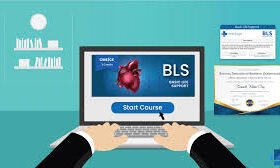A well-optimised website is a useful asset in driving business growth. Performance, user experience, and visibility are essential components in maximising its potential. Even small adjustments can make a significant difference to overall success when implemented with the right strategies.
This blog covers essential website optimisation techniques to boost performance and stay competitive in the digital landscape.
What Is Website Optimisation?
Website optimisation enhances loading speed, ensures smooth functionality, and improves search result rankings.
The main goals of web optimisation are to improve user experience and increase exposure in order to draw in more visitors. By making constant improvements, the objective is to raise traffic and conversion rates.
The Role of Website Optimisation
Long-term success is attained only when a website is optimised. A well-optimised website is going to ensure an excellent user experience like fast loading, easy navigation, and usability on all types of devices. Websites that cannot offer this, tend to lose visitors who rarely come back, since first impressions are crucial in audience retention.
The usability of a website directly determines how users are going to interact with your website. A difficult-to-use or confusing website will sooner or later find itself deterring new visitors and losing regulars. Effective optimisation does not stop at the visual look but also encompasses performance, responsiveness, and ensuring everything on that website works as it should.
By focusing on these aspects, a website can attract and retain visitors, while converting them into paying customers. Leveraging insights from industry experts, such as those offered by TIDAL Digital, can further enhance optimisation strategies, ensuring the website remains competitive and aligned with the latest trends. This ongoing process is essential for achieving long-term success and sustained business growth.
1. Improving User Experience (UX) Design
A site that is easy to navigate, loads quickly, and provides a seamless experience across all devices is far more likely to engage visitors and convert them into loyal customers.
Speed is a critical factor in this equation, as long loading times can lead to high bounce rates. 53% of mobile users abandon a page if it takes longer than 3 seconds to load. To improve site speed, several strategies can be employed, such as compressing images without losing quality, minimise HTTP requests, enabling browser caching, and utilising a Content Delivery Network (CDN).
With the consideration that most website traffic these days is generated from mobile phones, optimisation for mobile usage is essential. The responsive design techniques being used shows that the site works efficiently through different screen sizes, ensuring consistency in user experience.
Further, simple navigation should guide users to the most important areas of the site to enhance engagement and increase conversion.
The logical structure of menus, breadcrumbs, and well-implemented search can help users find what they need as fast as possible. These measures have a double effect on improving not only the functionality of the website but also the overall user experience, retention rates, and performance.
2. Optimising for Search Engines (SEO)
SEO is an important component of website optimisation since it involves targeted keywords and terms that your audience is searching for on the internet. By incorporating such keywords naturally into content, a website can raise its ranking within the search engines.
Long-tail keywords are specific phrases that are usually less competitive but can attract highly targeted traffic. But keyword research itself is only half the equation. What’s just as important is creating high-quality content containing not just these relevant keywords, but real value for the users. It could be a well-researched blog post, a how-to guide, or an engaging video that provides the users with practical information or insights.
Moreover, it is necessary to take care of on-page elements, such as title tags, meta descriptions, and header tags, such as H1, H2, etc., since they will play an enormous role in how search engines interpret and rank this content.
Including descriptive image alt text further makes the website more accessible and considerably enhances its SEO performance.
Another key component of SEO is link profile building. It means creating a great internal linking structure that will facilitate navigation by users and search engines alike while building quality backlinks from other reputable relevant websites in the industry. Partnering with a digital advertising agency can help streamline this process and ensure you’re targeting the right platforms for backlinking and internal structure optimisation.
These backlinks signal to the search engines that the site is credible, authoritative, and should therefore rank well. By focusing on broad SEO strategies, a website will manage to become more visible, increase its flow of traffic, and finally, improve engagement.
3. Using Analytics for Continuous Improvement
Website optimisation is not a singular event but an ongoing process that requires regular monitoring and adjustments. Google Analytics serves as an invaluable tool in this regard, helping to ensure the website remains effective in capturing user attention and driving conversions.
By providing detailed insights into various aspects of website performance, it enables data-driven decision-making. Analysing how users interact with the site allows businesses to identify areas for improvement, implement necessary changes, and ultimately enhance both functionality and user experience.
Key metrics Google Analytics monitors include bounce rate, session duration, conversion rate, and traffic sources. Bounce rate reveals how many visitors exit the site after viewing just one page, indicating potential engagement issues.
Session duration provides insight into how long users stay on the website and engage with its content. Conversion rate measures the proportion of visitors who complete desired actions, such as making a purchase or subscribing to a service.
Traffic sources indicate where the visitors are coming from, whether through organic search, paid advertising, or social media channels. Regular analysis of these metrics allows businesses to refine their optimisation strategies, leading to improved performance and sustained growth.
4. Streamlining the Checkout Process for E-commerce
When it comes to e-commerce websites, the checkout processes are important, as these are the places where potential customers turn into actual buyers. Literally, a seamless and smooth checkout experience could bring down the cart abandonment rate by a huge percentage, leading to more sales.
While improving this process, what is important is to minimise the steps involved in making a purchase for smooth and simplified navigation on the user’s part. Make it easier by offering guest checkout options, where checking out and completing the purchase does not require the creation of an account.
Be sure to provide various payment gateways so the customers can enjoy the freedom of choice in their preferred means of paying for greater convenience. Also, promising the safety of the site by putting trust signals in full view, such as SSL certificates, will keep customers very confident that their information is safe, therefore trusting you enough to make the purchase.
5. Utilising Social Proof and Testimonials
Building trust is a core component in terms of actually converting website visitors into paying customers. Add elements of social proof across the website, which will have a bottom-line effect on the decision-making process of any potential customer.
Customer testimonials, reviews, and even case studies showing what others have experienced will do the magic. Displaying badges of trust and certifications further assures the visitor that the site is credible and secure.
Additionally, showcasing your social media presence can build confidence by highlighting positive interactions and a strong community of followers. These factors all come together to increase user confidence in the brand, thus driving conversions.
Frequently Asked Questions
- How to increase website traffic?
Improved search engine optimisation (SEO), the production of excellent content, and the use of social media platforms are the main strategies to boost website traffic. Visibility may also be increased by paid advertising and constructing backlinks from reliable websites.
- How do I increase my website ROI?
To boost website ROI, improve user experience and conversion rates by making site functionality, speed, and design improvements. To draw in high-converting, quality traffic, spend money on focused marketing techniques like SEO, sponsored advertisements, and content marketing.
- Why is a website important for promotion?
An essential tool for promotion is a website, which provides continual client engagement, advertises goods and services, and improves exposure through search engine optimisation.
Unlock the Website’s Full Potential
Website optimisation is more than just making a website seem better; it also entails creating a useful tool that promotes company expansion. Website performance may be significantly enhanced by converting it into a conversion-driven platform that prioritises user experience, SEO, analytics, and trust-building.
A website’s optimisation is an ongoing activity. Sustaining success will require keeping the website up-to-date on emerging trends and best practices as well as fine-tuning tactics in response to user feedback and data. Partnering with a digital marketing agency can provide expert guidance in refining these strategies for the optimal performance of the website.












Leave a Reply